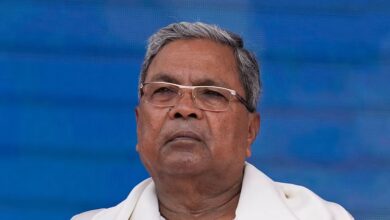
The Egyptian Museum in Tahrir Square, Cairo, has created a new online poll by which ancient-history enthusiasts can select their favourite artifact relating to Egypt's ancient wars from among nine proposed by the museum's staff.
The winning object will be placed on display at the museum's entrance throughout the month of October to commemorate Egypt's victory of the 6th of October War.
The propsed artifacts, which are listed on the Facebook page of the Antiquities Ministry, are all related to the wars fought by Egypt in ancient times, including details of the weapons used.
"The artifacts belong to different historical eras and are made of different materials," said Sabah Abdel Razek, director general of the Egyptian Museum.
"Some are panels bearing inscriptions that represent war scenes and others are statues of the most important Egyptian army leaders as well as military equipment," she added.
"One of the most beautiful of these selected pieces is a wood panel that dates back to the era of the 11th Dynasty and represents a group of Egyptian archers. It was discovered inside the Prince Mesehti cemetery in Assiut," said Abdel Razek.

A model representing a troop of Egyptian lancers from the tomb of Prince Mesehti
Asyut, Tomb of Mesehti.

Statue of the Theban General Antef, chief general of King Mentuhotep II, seated and wearing a wig.
Another statue is made of colored sandstone and belongs to one of the military commanders under King Mentuhotep II of the Eleventh Dynasty.
There is also a statue made of alabaster that represents King Thutmose III, one of the most important military commanders in Egypt in the 18th Dynasty, who created the largest empire that ancient Egypt had ever seen.

Statue of King Tuthmosis III, who created the largest empire ancient Egypt had ever seen. he conducted approximately seventeen campaigns . The king is kneeling offering Nw vessels and wearing the Nemes with the ureaus.
Also featured is a shield of gilded wood of King Tutankhamun depicting the young king holding a sword with one hand and holding two lions by their tails with his other hand.

One of eight shields of King Tutankhamun, which were among the military equipment found in his tomb, shown with a winged sun disk curving round the top, protecting the king who is shown with a scimitar in one hand and holding two lions by their tails in the other. The lions symbolize the enemies of Egypt. Behind him, the vulture goddess, Nekhbet, spreads out her wings to protect the king.
Museuem enthusiasts can also vote for a carved head of Nakhtmin and a statue of Nakhtmin and his wife Tiy seated, with an offering table in front of them. Nakhtmin was the heir to the throne during the reign of King Ay. He is identified as the son-in-law of King Ay.

A statue of Nakhtmin and his wife Tiy seated
Two limestone ostracons from the 19th and 20th Dynasties are also included. One shows king Ramses IV on his chariot catching Syrian and negro captives, with a lion attacking another Syrian captive. The second depicts King Ramses IX with two prisoners. Beside him is the god Amun.

Ostracon of Ramses IV on his chariot catching Syrian and negro captives; with a lion attacking another Syrian captive. On the back depicted with a bull.

Ostracon depicted with King Ramses IX in tensed two prisoners with spear. Beside him the god Amun holds out a falcon and gives him an Ankh and Was scepter for supporting him.
Several examples of currency from the Greco-Roman era are also included in the poll. Among them are coins bearing representations of victory and the images showing the courage of the army.


The Egyptian Museum frequently holds online polls of this sort, allowing followers of the museum's activities and other Egyptology enthusiasts to vote on their favorite objects.




